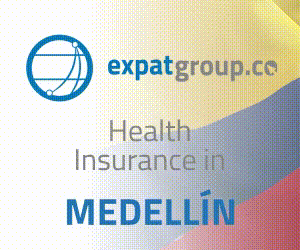Data Jam 2017: Competition Shows How Data Science Can Revolutionize Rural Development in Colombia
These days, the world is awash in data. There is so much being created, and enterprising people from all ages, backgrounds, and disciplines are finding new ways to gain insights from this flood of information.
But one problem is that there is simply too much data for most companies and agencies to actually use productively. It sits idly and unorganized in various systems in spreadsheets, unable to be put to good use due to the time constraints that all workers face in modern life.
Photo: The three winning teams in the Data Jam 2017 competition in Bogotá took home $20,000 USD in grants for crafting innovative, data-based solutions to rural development challenges. (Credit: USAID)
In part due to this phenomenon, there is a new trend toward “open data.” Advocates are pushing for government — and other institutions, but especially government — to embrace a sharing mentality and start putting the bulk of their data out into the world. That way, anybody who wants to put in the effort can mine through the numbers in search of patterns, trends, and knowledge. In some cases, this can yield remarkable ideas that can help drive more efficient and effective public policy.
In Colombia, the U.S. Embassy and the United States Agency for International Development (USAID) have been striving to promote open data policies and encourage those with the right skill set to analyze the resulting data. A recent event brought these concepts to life.
These agencies, along with other partners, hosted Data Jam 2017 in Bogotá earlier this month “to help support a culture of evidence-based decisions and public policies,” according to Elizabeth Mendenhall, supervisory program officer of USAID in Colombia. Participants were challenged to analyze data sets and devise solutions to problems affecting rural development in the country. Some of the discoveries were very innovative and judges handed out $20,000 USD in grants to the winners who will go on to meet with public officials in Colombia’s government in hopes of turning their ideas into reality.
To provide some more details about Data Jam and USAID’s objectives, Mendenhall recently took the time to share her insights with Finance Colombia.

Elizabeth Mendenhall of USAID in Colombia says Data Jam 2017 in Bogotá aimed “to help support a culture of evidence-based decisions and public policies.” (Credit: USAID)
Finance Colombia: Can you tell me a bit more about the history of Data Jam? How long has this been going on and what type of other similar initiatives has the organization been involved with?
Elizabeth Mendenhall: USAID released its first-ever open data policy in October 2014, not only to ensure that the data we generate with taxpayer funds is made public by default, but to invite the global public into this amazing opportunity to use publicly available data and support the development of a critical analysis of open data initiatives in the development context.
In April 2015, USAID hosted a first-of-its-kind Open Data Hackathon, focusing on crime and violence in Latin America and the Caribbean. The event attracted over 100 participants from approximately 50 organizations worldwide.
The U.S. Embassy’s Data Jam 2017, sponsored by USAID/Colombia, is the result of a commitment made during the 2015 High Level Partnership Dialogue (HLPD) between the governments of Colombia and the United States. During HLPD both countries expressed their interest in exploring opportunities for bilateral cooperation in the use of open data.
The key difference between a hackathon and a data jam is the focus of the event and its use of open data. A hackathon is more focused on the development of tech solutions (like a new app or web platform) that make use of the information available; a data jam is focused more on the analysis of that open data to arrive at new insights, new learning that can be applied to improve public policy, inform decisions, etc.
The focus of the Data Jam 2017 was twofold. First, it aimed to promote the use and existence of open data in Colombia. Increase the public’s awareness of the data, and encourage the use of it (and the demand for more). The second focus was to use the opportunity of the event to gain new information and insights into rural development in Colombia that could improve USAID’s program design and management, given that a large percentage of USAID’s work is focused on rural development issues, as is the GOC’s new peace accord.
Finance Colombia:. What were the winning pitches based around? Are these solutions things that can — and will — be implemented in real-world settings in rural Colombia?
Elizabeth Mendenhall: The three winners were:
1st place: Colombia Rural, Joven y Productiva. Grant: $10,000 USD
2nd place: M&M Montes de María. Grant: $6,000 USD
3rd place: Green Hat. Grant: $4,000 USD
The winning team analysis was based on: (1) how to close the gap between urban and rural regions, (2) help young people to be optimistic and productive (in rural regions), (3) inclusive policies for rural youth, (4) creating productive chains, and mainly (5) working to incentivize the youth population to stay in the rural areas and be part of the shift to a new rural population.
The team in second place proposed a solution and integrated/holistic rural investment approach for Montes de María for: (1) generating employment, (2) strengthening community-based organizations, and (3) ethnic education.
Third place presented a solution to analyze the income of small producers based on the UPAs in the Censo Nacional Agropecuario (CNA) in order to design projects at the local (rural) level based on already existing public policies.
All teams supported their proposals performing intensive data analyses and using advanced statistical and even machine learning approaches that backed up their proposals and prototypes.
In the next three weeks, the winning teams will meet with USAID/Colombia to present a set of specific deliverables that will be used to give feedback to the different actors and partners of the Data Jam (e.g., MinTIC, UPRA, MinAgricultura, DANE, DNP, etc.). The results and analyses from the Data Jam 2017 will be used as an input for public policies and to improve USAID programming and decisions in Colombia.
Finance Colombia: More generally, how can the approach taken by those at Data Jam help change policies and planning in terms of something like rural development? It seems like a break from traditional strategies that may be based around some evidence but lack the type of rigor and accountability that a more data-focused approach can have.
Elizabeth Mendenhall: That is exactly what USAID and the U.S. Embassy were trying to achieve with the Data Jam: to help support a culture of evidence-based decisions and public policies.
Beyond accountability to citizens, what we also want to promote is a collective work between the citizens and government entities at all levels. One limitation that many institutions have is the time and technical capacity to use existing data in their possession as thoroughly and regularly as they would like (or need). Data, open or not, often sits idle, waiting for someone to have the time and the ability to really analyze it.
With the Data Jam, we wanted to encourage wider sharing of data for this purpose. The idea is that if the data is available, someone will use it. Therefore, we want to direct and encourage that use toward a wider public purpose. This can be cost effective for governments and fosters innovation and learning.
Finance Colombia: How can this translate to other areas? Perhaps in terms of environmental challenges or infrastructure?
Elizabeth Mendenhall: We are sure the Data Jam “model” can be applied to different sectors or more specific geographies. In the end, it will depend on the amount and quality of the Open Data that is publicly available from the government and other sources.
Finance Colombia: Are the results — and more so just the overall environment of creativity and excitement you saw during the two-day event— something that could have been similar, for example, five years ago? I know this endeavor isn’t all about technology, development, and programming. But in terms of data visualization and this type of problem solving for development challenges, is this community growing and maturing in Colombia? How do things like Data Jam help develop and improve that community?
Elizabeth Mendenhall: In the past five years, Open Data, Big Data, and Data Science technologies and knowledge have advanced a great deal in Colombia. Today there are communities, meet-up groups, and postgraduate studies that are leveraging the capacity of the data science professionals to serve a growing demand.
So this was the perfect time to build on that with Data Jam. The Data Jam has drawn the attention of the data science community to propose solutions to the main development challenges in Colombia.
Finance Colombia: What would you tell students and younger professionals about getting involved in this type of community and work? How can more people benefit from the knowledge and advice from the many capable and innovative people who were at Data Jam?
Elizabeth Mendenhall: There is a demonstrated demand for data science professionals in the world, and developing those skills will certainly be a competitive advantage in their future. For instance, according to Forbes, in 2015, “IBM, Cisco, and Oracle together advertised 26,488 open positions that required big data expertise in the last 12 months.”
From the very beginning of the design of the Data Jam, we decided to make public the analyses resulting of the Data Jam since they were based on Open Data. In that way, any citizen or government institution can benefit from them and continue or refine the solution for their own purposes.

























